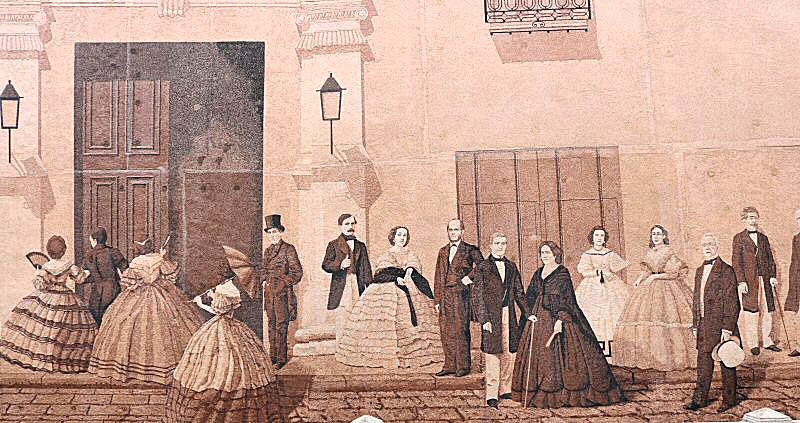

Everyone that visits Old Havana and wants to travel through
history, should observe the giant mural on the Mercaderes
street, named Mural Histórico Cultural del Liceo Artístico y
Literario de La Habana
The mural covers an area of about 300 m2 and is made up of 52 panels. 67 outstanding figures from the Cuban history and arts, are portrayed standing outside and on the balconies of a classic colonial Cuban building, the Casa del Marqués de Arcos. In fact, the mural repeats the silhouette of the opposite building. All the figures are in life-size.
In 1844, on the
initiative of Ramón Pintó, the Liceo Artístico y Literario
de la Habana (Artistic and Literary Lyceum of Havana) was
established in the Casa del Marqués de Arcos to promote fine
arts and literature among the habaneros. Ramón Pintó was a
journalist and politician that, despite being Spanish,
sacrificed his life for the freedom of Cuba. During these
years, the old mansion also housed the Escuela de Pintores
Muralistas (the School of Mural Painters), that took part in
the decoration of the walls of the lyceum.
Some of
the figures on the mural don’t have a direct link to the
lyceum, such as Carlos Manuel de Céspedes, Gertrudis Gómez
de Avellaneda, Bishop Espada, the Countess of Merlin,
Brindis de Salas, José de la Luz y Caballero, Jean Baptiste
Vermay, José Antonio Echeverría and Placido, among others,
but their lives and work influenced the Cuban culture in the
19th century
Andrés Carrillo was the author of this collective
work, in that many people participated, including the
architect Jaime Rodrígues Cunill, sculptor Nicolás Ramos
Guiardinú and a group of students and teachers from the
Escuela de Artes Plásticas San Alejandro. Andrés Carrillo’s
idea was not only to decorate the empty wall opposite the
Casa del Marqués de Arcos, but he had in his sights to turn
it to a mirror of the historical period, in that the
colonial mansion was one of the centers of art and culture
in Havana.
For a
long time, Andrés Carrillo searched for any information
about the people that attended the Liceo Artístico y
Literario de la Habana and the Escuela de Pintores
Muralistas in the Casa del Marqués de Arcos. He made a
research through the newspapers and magazines, published in
the island around 1844, and he studied on the dresses of
that epoch, looking to the photos that he could find.
The
artist used an unfamiliar material by crushing the natural
stone to a specific grain size and soaking the stone chips
in acrylic resin to provide great resistance and durability
to the material outdoors. It was also a cheap solution,
compared to the ceramic tiles. The mural was composed in
tones of sepia. 13 shades were obtained by mixing the
material in four basic colors, like brown, coral pink, black
and light beige. All the figures were covered with thin
layers of sand.
The
work was completed at the end of 2000.
Mural de Mercaderes is on the
Mercaderes street, opposite to the Casa del Marques de Arcos,
one block east to the Plaza de la Catedral.
